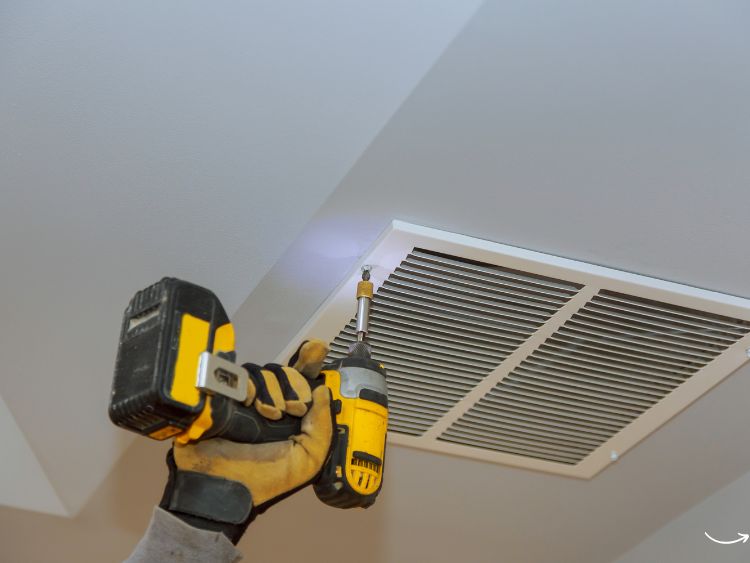Is your garage feeling more like a sauna than a storage space? Or perhaps you’re noticing that musty odor that just won’t go away? If so, it’s time to consider installing a garage ventilation fan. This article will delve into the benefits, types, and installation process of garage ventilation fans, ensuring your garage remains a comfortable and safe space for all your needs.
Why You Need a Garage Ventilation Fan
Combat Excess Heat
Garages can quickly become hot, especially during summer. Without proper ventilation, the temperature inside can soar, making it unbearable to work on your car, use as a workshop, or even store certain items. A garage ventilation fan helps expel hot air, replacing it with cooler, outside air, thus maintaining a more comfortable temperature.
Reduce Moisture and Mold
Garages often suffer from high humidity levels, especially if they are attached to the house or used to store wet vehicles. This moisture can lead to mold growth, which poses health risks and can damage your belongings. A ventilation fan helps reduce humidity, keeping your garage dry and mold-free.
Eliminate Harmful Fumes
Garages are often used to store vehicles, paints, chemicals, and other items that can emit harmful fumes. These fumes can accumulate and pose health hazards if not properly ventilated. A garage ventilation fan helps remove these pollutants, ensuring the air remains safe to breathe.
Types of Garage Ventilation Fans
Wall-Mounted Fans
Wall-mounted fans are a popular choice for garage ventilation due to their ease of installation and effectiveness. These fans are installed on the garage wall and can be set to exhaust hot, stale air outside, bringing in fresh air from vents or open windows.
Ceiling-Mounted Fans
Ceiling-mounted fans are another excellent option, especially for garages with limited wall space. These fans can be installed directly into the ceiling and are particularly effective at circulating air throughout the entire garage.
Portable Fans
For those who need a more flexible solution, portable fans can be a great option. These fans can be moved around as needed, providing ventilation wherever it’s most required. While not as powerful as wall or ceiling-mounted fans, they offer versatility and ease of use.
How to Choose the Right Garage Ventilation Fan
Size of Your Garage
One of the first considerations when choosing a garage ventilation fan is the size of your garage. A fan that’s too small won’t effectively ventilate the space, while one that’s too large may be overkill. Measure your garage’s square footage and consult fan specifications to find the right fit.
Ventilation Needs
Consider how you use your garage and your specific ventilation needs. If you frequently work on projects that generate heat or fumes, a more powerful fan may be necessary. Alternatively, if your primary concern is reducing humidity, a less powerful fan may suffice.
Installation Requirements
Different fans have different installation requirements. Wall and ceiling-mounted fans typically require more complex installation, including wiring and mounting. Portable fans, on the other hand, can simply be plugged in and used immediately.
Installation Process
Gather Your Tools
Before starting the installation, make sure you have all the necessary tools. This typically includes a drill, screws, a ladder, a measuring tape, and possibly some wire cutters if electrical work is involved.
Choose the Right Location
Selecting the right location for your fan is crucial for optimal performance. For wall-mounted fans, choose a spot that’s high on the wall, near the ceiling, to maximize airflow. Ceiling-mounted fans should be centered to ensure even distribution of air.
Install the Fan
Follow the manufacturer’s instructions carefully. This usually involves drilling holes for mounting brackets, securing the fan in place, and connecting any necessary wiring. If you’re not comfortable with electrical work, consider hiring a professional to ensure the job is done safely.
Maintaining Your Garage Ventilation Fan
Regular Cleaning
To keep your fan running efficiently, regular cleaning is essential. Dust and debris can accumulate on the blades, reducing performance. Use a damp cloth to wipe down the blades and housing periodically.
Check for Wear and Tear
Over time, parts of your fan may wear out or become damaged. Regularly inspect the fan for any signs of wear, such as frayed wires or loose screws, and address these issues promptly to prevent further damage.
Lubricate Moving Parts
Some fans may require lubrication to keep moving parts running smoothly. Check the manufacturer’s instructions for guidance on how to properly lubricate your fan.
FAQs
How often should I run my garage ventilation fan?
It depends on your specific needs. If you’re using your garage for activities that generate a lot of heat or fumes, you may need to run the fan continuously. For general moisture and temperature control, running the fan for a few hours each day may be sufficient.
Can I install a garage ventilation fan myself?
Yes, many fans come with detailed installation instructions and can be installed by a handy homeowner. However, if you’re not comfortable with electrical work, it’s best to hire a professional.
Do garage ventilation fans consume a lot of energy?
Most garage ventilation fans are designed to be energy-efficient. Look for models with energy-saving features, and consider using a timer or thermostat to control when the fan runs, reducing energy consumption.
Summary
A garage ventilation fans is an invaluable addition to any garage, providing relief from excessive heat, reducing moisture and mold, and eliminating harmful fumes. By understanding your specific needs and choosing the right type of fan, you can transform your garage into a comfortable, safe, and functional space. Whether you opt for a wall-mounted, ceiling-mounted, or portable fan, proper installation and maintenance will ensure your ventilation system operates effectively for years to come. So, don’t let your garage become a stifling, damp, or hazardous environment—install a garage ventilation fan and breathe easier.

